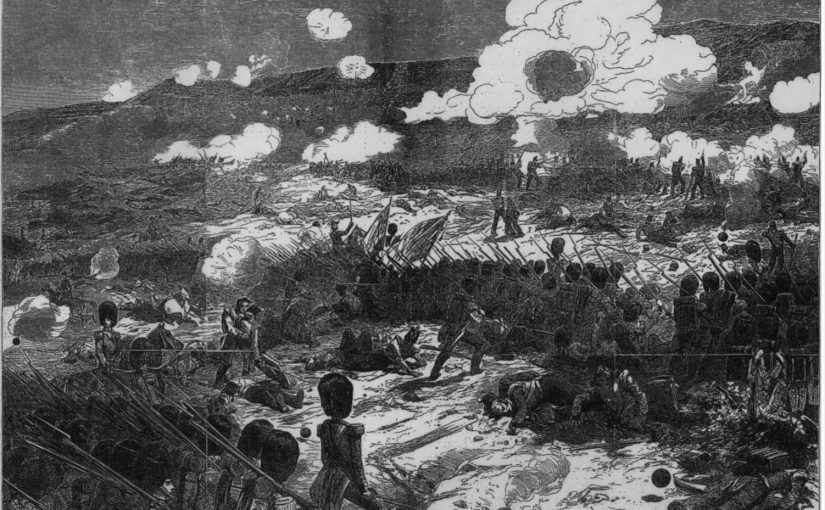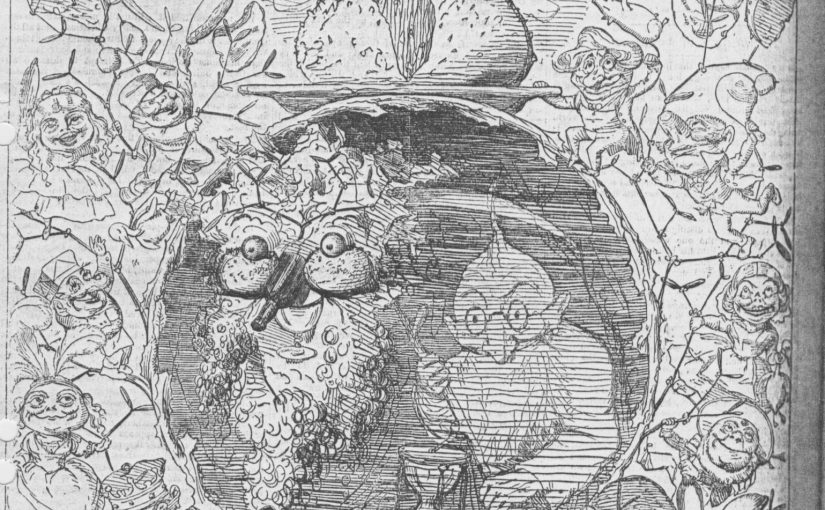ITALY
As in other European countries, magazine publication in Italy was begun in order to disseminate the ideas of elite groups, in the Italian case a process closely allied to the Catholic Church, at least initially. Unlike in France and Britain, there was no single capital city as, like Germany, Italy was divided up into many different states. For this reason magazines tended to be local productions. In 1668 the quarterly Giornale de’ Letterati was launched by Francesco Nazzari, a professor of philosophy at La Sapienza University, Rome, and also president of the papal college concerned with propagation of the faith, De Propaganda Fide. Very soon other cities set up similar publications. The most activity took place in Venice where there was already a thriving print industry.
While as in the rest of Europe, elite magazines, including ladies’ fashion magazines inspired by French models, were being published in the eighteenth century, the mass-market press took off later than elsewhere largely due to restrictions on the market caused by Italy’s fragmentation into different states, and by low literacy rates. There was huge variation in density of readership: Ottino (1875, p. 11) noted that in 1864 the vast majority of newspapers and magazines were published and circulated in the North East quadrant of Torino, Milano, Firenze and Genova. Undertakings such as Sonzogno’s sumptuous and loss-making L’Illustrazione Universale (1864-1867) and its cheaper and much more popular analogue the Emporio pittoresco (1864-1889) were risky, and only after unification in 1871 did the markets begin to open to magazines in a sustained way, the most successful magazine being Treves’ L’Illustrazione italiana (1875-1962). Magazines such as the Nuova Antologia (1865-) and the Rassegna nazionale (1879-1952) became influential in seeking to promote the idea of a single Italy, and politicians such as Bonghi steered their contents to suit their policies. The magazine press was never as rich and diverse as in Germany, France, Britain or the USA, not least because until the twentieth century literacy rates and standards of living were comparatively low. Only in the twentieth century did the history of Italian periodicals become more similar to that of the rest of Europe, its family-run businesses gradually undergoing a series of mergers until they were absorbed into huge media conglomerates.
Even less than in France, Germany and Britain, little attention has been paid to the national history of magazines. As so often, the researcher needs to glean what she can from surveys of the national press as a whole. These, as in the rest of Europe, began to appear in the mid nineteenth century (see Ottino below), and in 1894 Piccioni’s ground breaking Giornalismo Letterario appeared (q.v.). But it was only with Castronuovo and Tranfaglia’s work from the 1970s (q.v.) that sustained academic work on press history began. As in other European countries, press directories have been compiled since the nineteenth century: the earliest is probably the Elenco dei giornali che si pubblicano nel Regno d’Italia (Torino-Firenze-Venezia: Bocca-Loescher-Munster). It is undated but the preface declares that it was compiled as a result of the unification of Italy and clues date it almost certainly to 1869. Alternatively, one may turn to studies of publishing history more broadly, though as late as the 1990s it was possible for Turi (q.v.) to lament the scarcity of more than antiquarian or local studies. Of particular interest for Italian scholars of the press have been early literary magazines (and the literary magazine in general) and the Fascist period. A good deal of work remains to be done on the nineteenth-century magazine, including the trade and professional periodicals which Ottino listed in considerable numbers.
OVERVIEWS
Bertacchini, Renato. 1980. Le riviste del novecento. Introduzione e guida allo studio dei periodici italiani: Storia, Ideologia e Cultura. Firenze: Le Monnier
This useful guide to literary magazines from 1880 to the early 1970s is organised chronologically and offers descriptions of individual publications (some prioritised over others very markedly) along with background context, and bibliographies. There is almost nothing on production history, the focus being on the ideological role of the magazines.
Castronovo, Valerio and Nicola Tranfaglia. Eds. 1976-2002, Storia della stampa italiana, Roma-Bari: Laterza, 10 vols.
The starting point for any detailed historical study of the Italian press must be Castronuovo’s epic project that traces its history from its beginnings to 2000. Magazines appear repeatedly in this account, but the main focus is on the newspaper press and politics.
Franchini, Silvia. 2002. Editori, lettrici e stampa di moda: giornali di moda e di famiglia a Milano dal Corriere delle dame agli editori dell’Italia unita. Milano: FrancoAngeli [sic]
A readable and well-researched illustrated history of women’s magazines from 1804 to 1870 using a materialist methodology in the Anglo-American tradition. The extensive bibliography, and the methodological introduction, are useful for the historical study of Italian magazines in general.
Hallamore Caesar, Ann, Gabriella Romani, Jennifer Burns. eds. 2011. The Printed Media in Fin-de-siècle Italy. Publishers, Writers and Readers. Oxford. Legenda.
While not all the essays in this collection focus on magazines, several highlight the importance of (especially) high culture, avant-garde magazines, such as the Florentine Il Regno, La Voce, Lacerba and the more famous Futurist Poesia.
Mondello, Elisabetta. Gli anni delle riviste. Le riviste letterarie dal 1945 agli ammi ottanta. Lecce: Millella.
A useful volume, similar in format to those produced by the Greenwood Press. It offers a substantial discursive introductory history followed by descriptive accounts of 172 literary magazines organised alphabetically. Despite the chronological constraints suggested by the title, there are descriptions of magazines from earlier in the century as well.
Mondello, Elisabetta. 2912. L’Avventura delle riviste: Periodicai e giornali letterari del Novecento. Roma: edizioni Robin
While seeming to trace again the work of Bertacchini (q.v.) Mondello offers a newer view by highlighting the role of periodicals directed at women. The volume concentrates on the first half of the century, the remaining 50 years comprised into one relatively brief final chapter (cf Mondello, 1985, q.v) . Again the approach is on ideology rather than on data concerning material production or dissemination.
Ottino, Giuseppe. 1875. La stampa periodica, il commercio dei libri e la tipografia in Italia, Milano, Libreria-Editrice Brigola.
Organised around a list of magazines and newspapers with much the same information as in a contemporary British press directory, this also contains two useful essays on the history and current state of the Italian periodical press, along with a bibliography of relevant works organised by place. The project to map the current condition of the Italian press was originally commissioned by the Associazione tipografica-libreria italiana in 1870.
Piccioni, Luigi. 1894. Il Giornalismo letterario in Italia: Saggio storico-critico. Torino-Roma: Ermanno Loescher
Surprisingly, given its date, this is an accessible place to start a study of early Italian magazines, with useful indexes and bibliographies and brief accounts of a large number of magazines (which, of course, needs to be checked against more recent studies). Projected as the first of a multivolume series, the others never appeared. Piccioni, however, went on to become one of the most authoritative writers on Italian journalism history, on which he published mainly journal articles.
Turi, Gabriele. ed 1997 Storia dell’editoria nell’Italia contemporanea. Milano: Giunti editore
Inspired by Chartier and Martin’s Histoire de l‘édition française, this is an ambitious multi-authored book that covers Italy’s publishing history from its beginnings to the 1990s in a series of essays. Magazines are often mentioned though the index will need to be used to find specific titles.
DATABASES
Biblioteca Digitale Toscana http://159.213.233.182/TecaRicerca/home.jsp
A clunky database containing 65 magazines and newspapers from various Tuscan libraries. It is not full-text searchable, the searches being restricted to titles and (some) authors. Users need to know in advance of searching the date of what they are looking for and also in what periodical. Searches bring the user to folders organised by year and then date. The user can then download individual issues one by one.
Biblioteca Nazionale di Firenze, di Roma http://www.bncf.firenze.sbn.it/pagina.php?id=47&rigamenu=Periodici; http://www.bncrm.librari.beniculturali.it/index.php?it/32/biblioteca-digitale
The library site claims to have digitised millions of pages since the 1980s, with especial attention to periodicals but most are currently (September 2015) unavailable because of the reorganisation of the site. The Italian National Library of Rome likewise () promises the imminent appearance of digitised periodicals but nothing is yet available.
CIRCE: Catalogo Informatico Riviste Culturali Europee. http://circe.lett.unitn.it/main_page.html
CIRCE is a database of European “cultural magazines” set up and maintained by staff at the University of Trento. It does not offer digital facsimiles as yet so much as descriptions and content indexes of literary, musical and artistic magazines.
 Maureen McCue
Maureen McCue



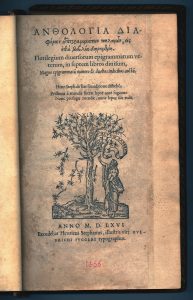

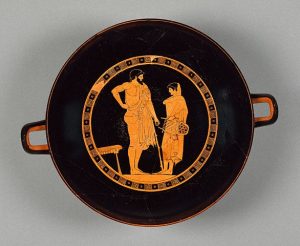 4) To a failed stoic – another passionate torrent of notes, this time based on Scriabin’s opus 11 C minor Prelude, of which, turned very definitely into C major, only the melodic shape remains. Other key references are to the theme of redemption in Wagner’s Ring and the interrupted cadence from the final , happy, movement of Mahler VII, whose key it shares. Structurally reminiscent of 1) – an A-A form – it is also a solar answer to (or aspiration for) 3). The two pieces share an interest with two adjacent notes at key moments, though used for different purposes. The failed stoic is fact a portrait of my friend Lawrence Razavi of whom I have fond memories not for his deeply problematic research on genetics (long before genetics were fashionable) but for his passionate and humane engagement in art. The piece is counterposed by….
4) To a failed stoic – another passionate torrent of notes, this time based on Scriabin’s opus 11 C minor Prelude, of which, turned very definitely into C major, only the melodic shape remains. Other key references are to the theme of redemption in Wagner’s Ring and the interrupted cadence from the final , happy, movement of Mahler VII, whose key it shares. Structurally reminiscent of 1) – an A-A form – it is also a solar answer to (or aspiration for) 3). The two pieces share an interest with two adjacent notes at key moments, though used for different purposes. The failed stoic is fact a portrait of my friend Lawrence Razavi of whom I have fond memories not for his deeply problematic research on genetics (long before genetics were fashionable) but for his passionate and humane engagement in art. The piece is counterposed by….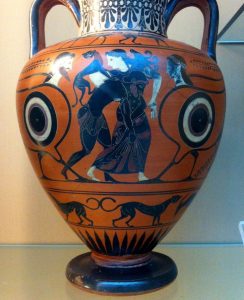 7) To a princess. A mirror of the first piece in its compositional technique and an echo of 5) in its sound world, this seeks to represent the nightmare of the princess’s dream of being smothered by bees. How I interpreted the bees is suggested by how the piece is obsessively based on the first two bars of Wagner’s Tristan and Isolde (which becomes clear only towards the very end, when it is quoted in recognisable form). On the whole though the notes of Tristan are jammed together in extreme dissonance, the last thumped chord comprising all the notes of the two bars played simultaneously in the bass (except for the previous pathetic rising 6th). There is also a passing and rather hopeless reference to the Falcon’s warning cry from Strauss’s Die Frau ohne Schatten (don’t do it!) – and a Messiaen-esque ornithological screech towards the end still based on the Tristan semitone cluster. A-B-A. Atonal with hints of F minor.
7) To a princess. A mirror of the first piece in its compositional technique and an echo of 5) in its sound world, this seeks to represent the nightmare of the princess’s dream of being smothered by bees. How I interpreted the bees is suggested by how the piece is obsessively based on the first two bars of Wagner’s Tristan and Isolde (which becomes clear only towards the very end, when it is quoted in recognisable form). On the whole though the notes of Tristan are jammed together in extreme dissonance, the last thumped chord comprising all the notes of the two bars played simultaneously in the bass (except for the previous pathetic rising 6th). There is also a passing and rather hopeless reference to the Falcon’s warning cry from Strauss’s Die Frau ohne Schatten (don’t do it!) – and a Messiaen-esque ornithological screech towards the end still based on the Tristan semitone cluster. A-B-A. Atonal with hints of F minor.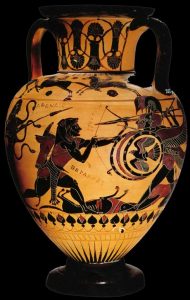 8) To a braggart soldier. A mirror of the second (and again in E flat), but even more empty of content, whose main melodic line is built on a simple descending scale. Just as the second mocked conventional femininity, this satirises the masculine. There is mock-military version of Wagner’s Siegfried which falls short in its final phrase (a rising 5th instead of a 6th), some Beethoven III (the “heroic” symphony) shoehorned into march tempo, a moment from the apocalyptic 4th movement of Mahler VI, and lots of gesture without content on one note – the musical equivalent of hot air or a military side drum – that eventually peters out because it has nowhere to go. A-B-A but something of a mess in its determination to aurally manspread.
8) To a braggart soldier. A mirror of the second (and again in E flat), but even more empty of content, whose main melodic line is built on a simple descending scale. Just as the second mocked conventional femininity, this satirises the masculine. There is mock-military version of Wagner’s Siegfried which falls short in its final phrase (a rising 5th instead of a 6th), some Beethoven III (the “heroic” symphony) shoehorned into march tempo, a moment from the apocalyptic 4th movement of Mahler VI, and lots of gesture without content on one note – the musical equivalent of hot air or a military side drum – that eventually peters out because it has nowhere to go. A-B-A but something of a mess in its determination to aurally manspread.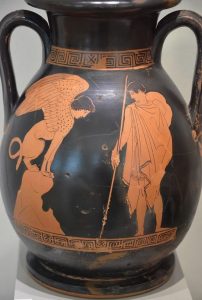 9) To a philosopher 2. Another march, but a very different masculinity from 8). The Siegfried-derived theme is taken up again (but now quietly in A minor – as far as possible from the soldier, and recalling the quietness of philosopher 1). The style distantly recalls the Poulenc of “L’aube” from Les animaux modeles (and thereby Parsifal). The opening chords from the second movement of Dvorak’s New World Symphony (chords as distant from each other as it is possible to be in terms of key) move the piece into the atonal B section and quotations from Alban Berg – the Lulu Erdgeist-motiv and “Wir arme Leute” (“We poor people”) from Wozzeck. The climax cadence is a version of the defixio chord, now rhythmically echoing not just the climax of 5) but also the funeral march of 3). The chord resolves into the A section again, now more insistently repeated in way that highlights its march-like quality (the soldier is not as Other as the philosopher thinks). The A-B dialectic is repeated until the New World chords eventually break free into the coda, a tiny syncopated dance that soon ends back with the New World chords calling for new ways of thinking that includes everything — even the devil’s tritone of the defixio. The chords fill out, eventually sounding simultaneously, clusters of the black notes of the piano glistening rhythmically high up in the air while all the white ones reverberate after a double glissando from middle C simultaneously up and down to cover the length of the keyboard. This is the aspiration this philosopher sought: to be open to everything.
9) To a philosopher 2. Another march, but a very different masculinity from 8). The Siegfried-derived theme is taken up again (but now quietly in A minor – as far as possible from the soldier, and recalling the quietness of philosopher 1). The style distantly recalls the Poulenc of “L’aube” from Les animaux modeles (and thereby Parsifal). The opening chords from the second movement of Dvorak’s New World Symphony (chords as distant from each other as it is possible to be in terms of key) move the piece into the atonal B section and quotations from Alban Berg – the Lulu Erdgeist-motiv and “Wir arme Leute” (“We poor people”) from Wozzeck. The climax cadence is a version of the defixio chord, now rhythmically echoing not just the climax of 5) but also the funeral march of 3). The chord resolves into the A section again, now more insistently repeated in way that highlights its march-like quality (the soldier is not as Other as the philosopher thinks). The A-B dialectic is repeated until the New World chords eventually break free into the coda, a tiny syncopated dance that soon ends back with the New World chords calling for new ways of thinking that includes everything — even the devil’s tritone of the defixio. The chords fill out, eventually sounding simultaneously, clusters of the black notes of the piano glistening rhythmically high up in the air while all the white ones reverberate after a double glissando from middle C simultaneously up and down to cover the length of the keyboard. This is the aspiration this philosopher sought: to be open to everything. This was my rather over-excited and not entirely accurate version of the famous Scriabin Etude opus 12 no 8 – except with even more notes tumbling over the keyboard than in the already full original. I always justified such excess to myself on the grounds that Scriabin used his piano scores as palimpsests for improvisation. My musically purist friends just thought all this sort of thing vulgar, and always made sure I knew it – so much for postmodern dissolution of aesthetic value in 1988!
This was my rather over-excited and not entirely accurate version of the famous Scriabin Etude opus 12 no 8 – except with even more notes tumbling over the keyboard than in the already full original. I always justified such excess to myself on the grounds that Scriabin used his piano scores as palimpsests for improvisation. My musically purist friends just thought all this sort of thing vulgar, and always made sure I knew it – so much for postmodern dissolution of aesthetic value in 1988!